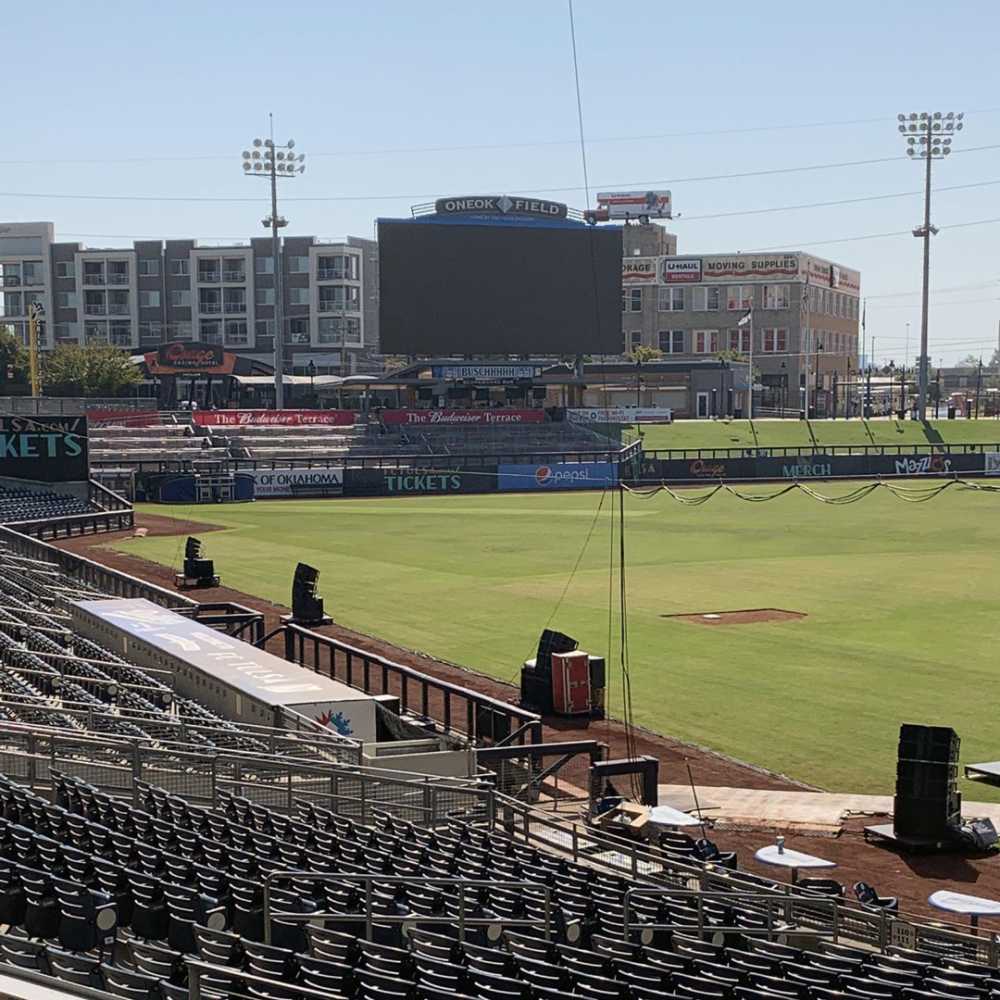Rigoletto plays the field with L-Acoustics
- Details

Every note of the operatic repertoire of Rigoletto was heard clearly and sweetly by the 1,685 socially-distanced audience members seated in the 2,700-capacity stadium thanks to an L-Acoustics Kara PA system provided by locally-based Axiom Audio.
The system consisted of 24 Kara enclosures, six SB18 subs, and three four-speaker clusters of Kiva II used as centre and side-fills, all powered by six LA12X and three LA4X amplified controllers. These components were on an Optocore fibre network that also included a DiGiCo SD10 FOH mixing console paired with two SD-Racks.
The stadium management wouldn’t permit the rigging necessary to fly the sound system to be erected on the field’s grass areas, as would typically be done in an outdoor location such as this one. Instead, taking inspiration from Super Bowl music system configurations, the Kara speakers were loaded onto nine wheeled carts. These lined the first and third baselines, four per side, facing the grandstands, with the ninth cart positioned at home plate, just in front of the low risers that were the stage for six orchestra members: two violins, viola, cello, bass, and piano. This arrangement provided the necessary coverage for all of the widely-spaced grandstand seating.
However, it also created the added challenge of putting loudspeakers on the field as the opera vocalists, unfamiliar with wearing wireless microphones, would roam about during the performance, creating the potential for feedback each time they neared a speaker cluster. The solution was to make each cart its own node on the system, putting each of the nine speaker pods on a matrix at the front of house, allowing FOH Engineer Steve Colby to turn off individual loudspeaker clusters as a performer approached one.
“We made the speakers individually controllable through the matrix,” says Axiom Audio president Ben Bruce. “Performers were moving all across the infield, and they’re opera singers, so they would be loud. Having individual control over the elements in what was essentially a distributed audio system greatly reduced the potential for gain-before-feedback. The Kara speakers were a perfect fit, in terms of size and power, for this.”
Colby agrees that the L-Acoustics system helped make the unusual location for the opera performance a resounding success. “Kara’s coverage properties allowed for a large and effective stereo field between any two of the arrays deployed around the field,” he says. “As a result, we could pan vocals and effects a little farther apart than usual without diminishing the experience for audience members who were not centered between the arrays. In particular, this was noticeable with the amount of artificial acoustic ‘space’ we created using a touch of reverb.”
















